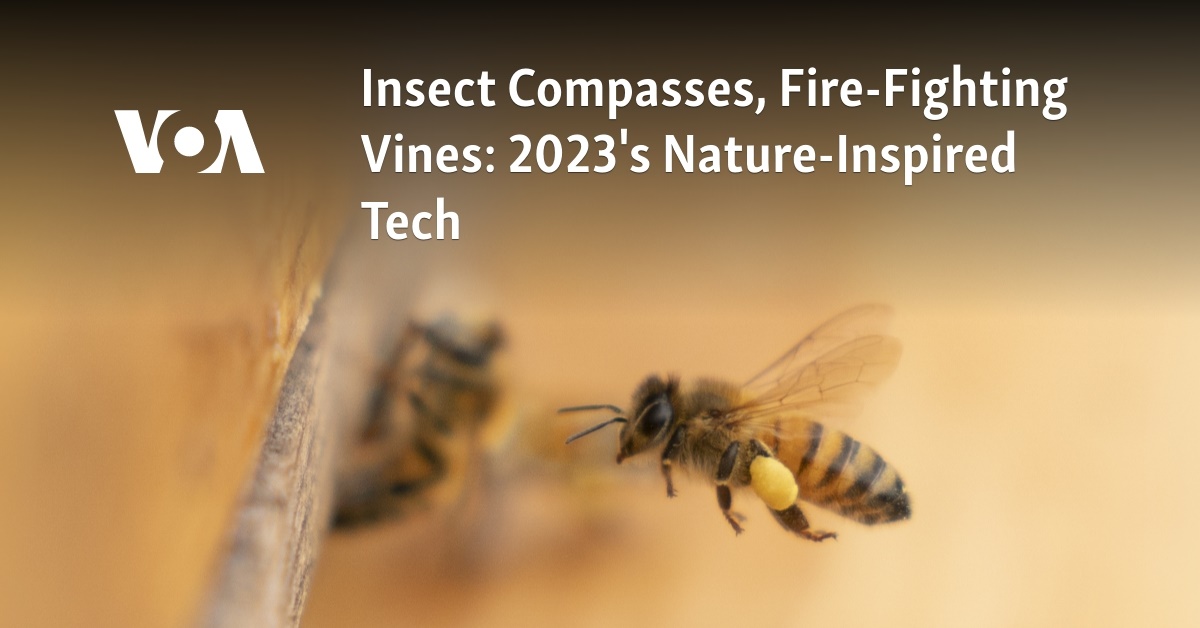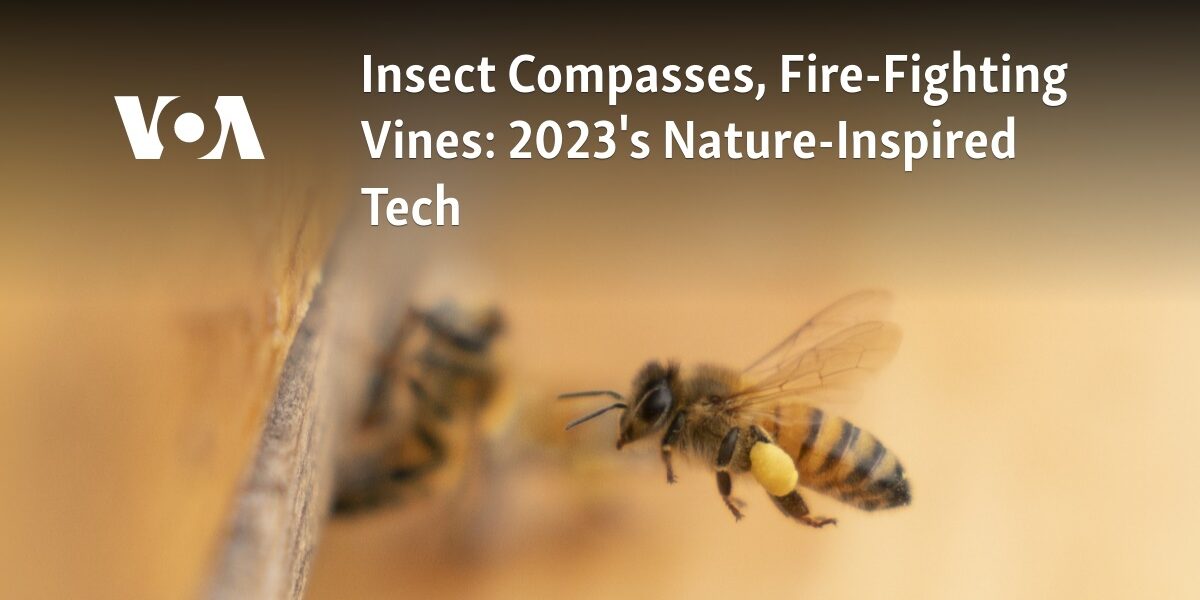Nature-Inspired Technology in 2023: Insect Navigation Tools and Fire-Resistant Plants for Fighting Fires
 Paris —
Paris —
Despite the threat of human-caused climate change to the environment, nature remains a source of inspiration for our technological progress.
According to Evripidis Gkanias, a researcher at the University of Edinburgh, the solutions found in nature have developed over billions of years and have been constantly tested since the beginning of time.
Gkanias is particularly intrigued by the potential for nature to serve as a teacher for artificial intelligence.
According to the speaker interviewed by AFP, human ingenuity may be captivating, but it falls short of the resilience found in nature, a fact well-known to engineers.
From compasses mimicking insect eyes to forest fire-fighting robots that behave like vines, here’s a selection of this year’s nature-based technology.
Insect compass
Certain bugs, like ants and bees, rely on their vision to navigate by gauging the brightness and polarization of sunlight. This allows them to use the location of the sun as a point of reference.
Scientists mimicked the structure of the eye in order to create a compass that can determine the position of the sun in the sky, even when there are clouds present.
Traditional compasses use the Earth’s magnetic field for navigation, but this can be easily disrupted by electronic interference.
According to Gkanias, who headed the study published in Communications Engineering, the light-detecting compass prototype is already functioning well.
He mentioned that with adequate funding, this could be converted into a smaller and lighter product that would be accessible to everyone.
By making some small adjustments, the insect compass could function on any planet with a noticeable celestial light source.
Water-collecting webs
A fabric, resembling the smooth fibers of a spider web, has the ability to gather water from dew and may soon have a significant impact in areas facing a shortage of water.
The synthetic fibers are inspired by the feather-legged spider, which has elaborate “spindle-knots” that enable it to capture and accumulate large water droplets on its web.
After the material is able to be produced in large quantities, the collected water could potentially be used on a significant level, according to Yongmei Zheng, co-author of the research published in Advanced Functional Materials. Zheng shared this information with AFP.
Fire-fighting vines
Nature can provide inspiration beyond just animals.
Researchers have developed an expandable robot that expands towards light or heat, similar to how vines climb up a wall or spread across the forest ground.
The tubular robot, measuring approximately two meters in length, can navigate using fluid-filled pouches instead of expensive electronics.
According to researchers at the University of California, Santa Barbara, these robots have the potential to locate and distribute fire suppression materials in areas of high heat.
Charles Xiao, co-author of the study, stated to AFP that although these robots may have a slower pace, it is suitable for combatting slow-burning fires like peat fires, which are a significant contributor to carbon emissions.
Prior to ascending the terrain, the robots must possess greater heat resistance and agility.
Kombucha circuits
Researchers at the Unconventional Computing Laboratory at the University of the West of England in Bristol have discovered a method for utilizing gelatinous kombucha mats, which are formed by a combination of yeast and bacteria during the fermentation process of the well-known tea-based beverage, to develop “kombucha electronics.”
The researchers created electrical circuits on dried mats that had the ability to light up small LED lights.
According to the authors, dry kombucha mats exhibit characteristics similar to textiles or leather, but they are environmentally friendly and can withstand immersion in water for extended periods of time without disintegrating.
“According to lead author Andrew Adamatzky and the laboratory’s director, Kombucha wearables have the potential to integrate sensors and electronics into the material, offering a smooth and subtle fusion of technology with the human body. This could include features like heart monitors or step-trackers.”
The mats are less heavy, less expensive, and more pliable compared to plastic. However, the authors warn that durability and large-scale production are still major challenges.
Scaly robots
Pangolins have a physical appearance that is a combination of a pine cone and an anteater. These mammals have a soft body and are covered in scales similar to reptiles. They have the ability to roll up into a ball as a defense mechanism against potential threats.
According to a recent study published in Nature Communications, a miniature robot could potentially utilize a similar design for tasks that could save lives.
The purpose of this is to travel through our digestive system and then release medication or halt internal bleeding in challenging areas of the human body that are difficult to access.
Ren Hao Soon, the primary author from the Max Planck Institute for Intelligent Systems, came across the creature while watching a YouTube video and realized it was a suitable match.
A soft and non-harmful material was required for use inside the human body, while also possessing the beneficial properties of a hard material, such as the ability to conduct electricity. The Pangolin’s distinct structure proved to be an ideal solution.
The miniature robots are currently in their preliminary phases, but they have the potential to be created for a cost of only 10 euros per unit.
Soon stated that it is only natural to turn to nature for solutions to these types of problems.
Each aspect of an animal’s design has a specific purpose. It is exceedingly graceful.
Source: voanews.com




